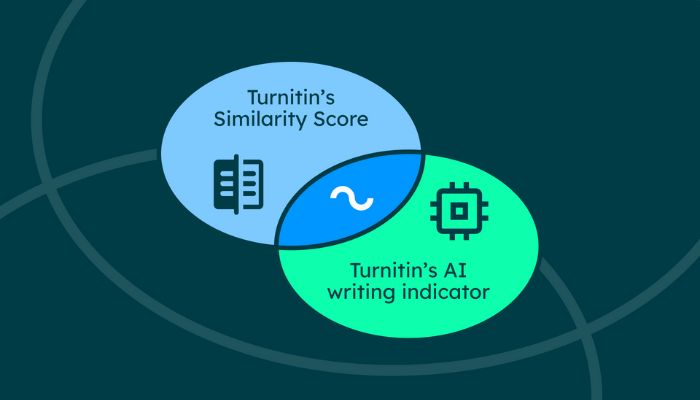Learn about What AI Detector Is Most Similar to Turnitin. Discover AI detectors like Viper, Quetext, and Copyleaks, offering plagiarism and AI content detection similar to Turnitin. Learn how these tools ensure content originality.
Introduction
Turnitin is considered the gold standard for anything academic integrity and plagiarism detection in checking the originality of written content. With the emergence of artificial intelligence (AI)-generated text, people at educational institutions, researchers, and organizations concerned with content will now look for an AI detector to do the same duties that Turnitin does: to ensure that the content is original and not AI-generated.
What AI Detector Is Most Similar to Turnitin?
Viper and Quetext are viable substitutes for Turnitin regarding plagiarism detection and originality checks. While Viper inspects submitted documents against a broad repository that primarily highlights similarities with online sources, Quetext employs an advanced and sophisticated algorithm to check for large blocks of copied content.
Anytime an instrument such as Turnitin generates reports, it becomes of great value to educators and researchers. Viper does have some functions devoted to plagiarism detection, similar to Turnitin, with a free version made available, while Quetext offers additional paid advanced features for thorough checks.
Some other tools are similar to Turnitin
Copyleaks
Copyleaks has an AI detection tool that detects AI content from human-written text. It is used to identify plagiarism and perform advanced AI checks, providing complete reports. Copyleaks are used extensively, especially in academia and business, to identify both copying and AI generation.
Winston AI
Winston AI is an AI-detection tool that analyzes writing patterns to identify AI content. It uses machine learning models to differentiate texts written by humans or those generated by AIs and achieve higher detection accuracy. It is a terrific boon for academic institutions and organizations worried about the penetration of AI languages into essays, reports, and other professional writings.
GPT-2 Output Detector
The GPT-2 Output Detector is an auxiliary tool to recognize texts generated by the OpenAI’s GPT-2 model that performs analysis of sentence constructs and patterns considered typical of GPT-2-generated works. The detector can help educators and researchers locate AI-generated content and thus uphold the integrity of the content that would be submitted.
Writer.com
Writer.com uses advanced algorithms for AI content detection to identify texts created with AI in different writing formats. It also focuses on preserving content authenticity for organizations and the teaching profession to ensure that writing is human-made. The system easily integrates with third-party systems for detection in real time.

BrandWell AI Content Detection
BrandWell’s AI content detector differentiates between human-written and AI-generated content based on language patterns and styles of textual engineering. It is meant to help companies and schools ensure content authenticity. The tool provides an in-depth analysis of the AI probability of content, thus helping deter its malpractice.
GPTZero
GPTZero is an AI-detection software that concentrates on finding texts generated by AI models, such as GPT-3 and GPT-4. It relies on advanced algorithms to study the writing attributes and inform whether the content is human-made or AI-generated while providing an easily usable interface for usability testing.
Writefull GPT Detector
Writefull’s GPT Detector is really for AI-written write-ups particularly in the scope of writing from GPT-based models. It aims to offer an accurate assessment of whether a given write-up was human-written or generated by a machine. Students, teachers, and companies concerned about the originality of their content will find this tool worth using.
How AI Detector Turnitin Works
Turnitin’s AI detector works by scanning multiple aspects of a submitted paper, including writing style, sentence composition, vocabulary usage, and cohesiveness.
It cross-references these factors with a vast database of works submitted in the past, scholarly papers, and AI-generated documents. The algorithm then computes if the text demonstrates patterns consistent with usual AI-generated writing.
AI detection tools, such as Turnitin, are made to identify unique markers of machine-generated writing, including overly formal or neutral language, repetitive formats, and unnatural phrasing that does not correspond to human patterns of writing. Through algorithms and machine learning, Turnitin can indicate content that is suspicious or might have been created by an AI.
Why is Turnitin’s AI Detection Important?
Turnitin’s AI detection is crucial to upholding academic integrity through the detection of AI-generated content, plagiarism prevention, and authenticity of research. It saves students from submitting plagiarized work, prompting improvement in skills. With advancing AI, Turnitin keeps pace with new technology advancements, keeping academic standards high and academic work credible and original.
Turnitin’s AI Detection Process
There are many signs of machine-generated content to look for in a document once it has been uploaded to Turnitin. Some such signs could be the following:
- Sentence Structure: AI-generated text can have strange sentence construction, sometimes too complex, and sometimes too simplistic. Turnitin thinks these anomalies are worth checking.
- Vocabulary: Large language models such as GPT-3 or ChatGPT are trained on vast amounts of data and therefore tend to exhibit a formal, neutral, or sometimes repetitive tone which the Turnitin algorithms check for.
- Tone and Style: AI texts are usually far more formal and neutral than any writing done by humans, which would leverage some personalized or emotional elaboration. Turnitin looks for that.
- Coherence: AI-generated content will sometimes fail to maintain logical flow or generate sections that seem disconnected from each other. Turnitin will check for the coherence of the document.
Conclusion
Several tools with names like Viper, Quetext, Copyleaks, GPTZero, and Winston AI have somewhat similar applications focusing on AI detection, functioning along the lines of Turnitin. They play a pivotal role in ensuring content originality and academic integrity, allowing educators, researchers, and businesses to generate reports with integrity.






